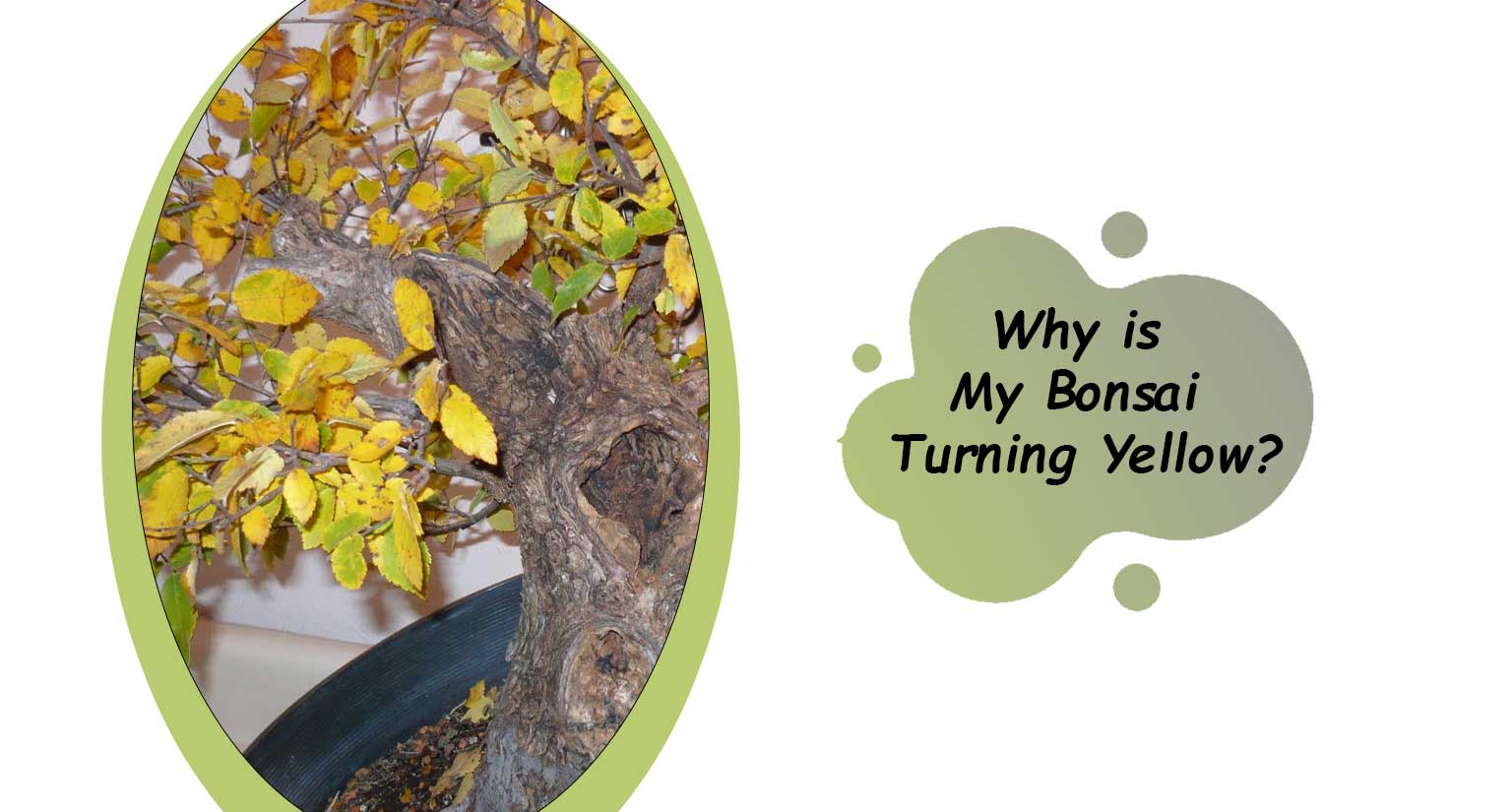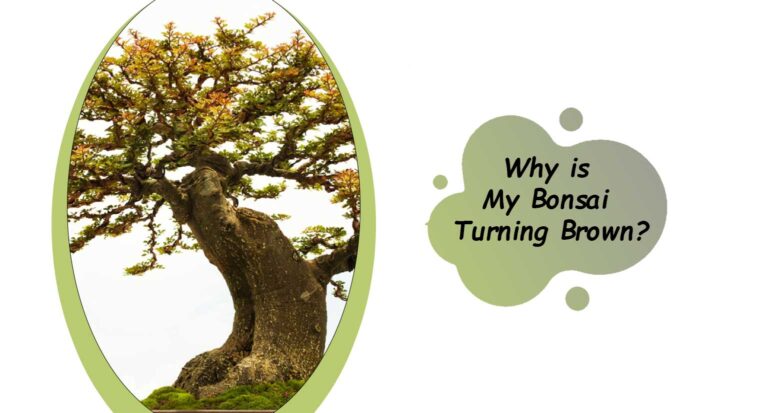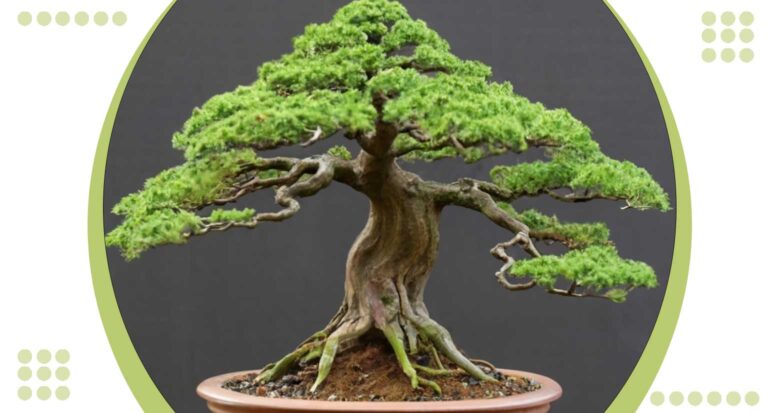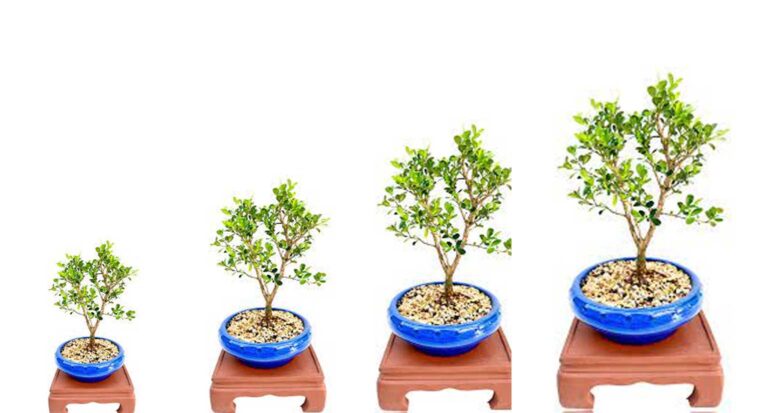Why is My Bonsai Turning Yellow?
Have you ever looked at your beloved bonsai tree and noticed that its vibrant green leaves are slowly turning yellow? If you’re facing this dilemma, you’re not alone.
Many bonsai enthusiasts encounter this issue, and it can be a cause for concern. We’ll delve into the common reasons behind your bonsai’s yellowing leaves, exploring both natural processes and potential problems.
By understanding the root causes, you’ll be better equipped to nurture your bonsai back to health and ensure its longevity.
So, let’s unravel the mystery of why your bonsai is changing color and discover how to address this issue effectively.
Why is my bonsai turning yellow? This question will be at the forefront of our exploration as we uncover the secrets to maintaining a thriving bonsai tree.
Reasons for Why Is My Bonsai Turning Yellow
Understanding the causes behind your bonsai tree’s yellowing leaves is crucial to providing the right care. Several factors can contribute to this issue, and it’s essential to pinpoint the exact reason. Here are some common reasons why your bonsai is turning yellow:
Natural Leaf Shedding
One of the most common reasons for yellowing leaves on a bonsai tree is natural leaf shedding. Bonsai, like all plants, have a natural life cycle for their leaves.
As older leaves age and reach the end of their life span, they may turn yellow before falling off. This is a normal process and shouldn’t be a cause for concern.
Overwatering or Underwatering
Incorrect watering practices can lead to yellowing leaves. Overwatering can suffocate the roots, causing them to rot, while underwatering can stress the tree and result in leaf discoloration. Finding the right balance in watering is crucial for the health of your bonsai.
Improper Light Conditions
Bonsai trees require the right amount of light to thrive. Too much or too little light can lead to leaf yellowing. Understanding your bonsai’s light requirements and providing the appropriate conditions is essential.
Nutrient Deficiency
Your bonsai may be turning yellow due to a lack of essential nutrients. Nutrient deficiencies can weaken the tree and manifest as yellow leaves. Feeding your bonsai with the right fertilizers can help prevent this issue.
Pest Infestation
Pests such as mites and aphids can damage your bonsai’s leaves, causing them to turn yellow. Regular inspection and pest control measures are necessary to keep your bonsai healthy.
Root Problems
Issues with the roots, such as root rot or poor root development, can impact the tree’s ability to absorb nutrients and water, leading to yellowing leaves.
Now that we’ve explored the common reasons for why your bonsai is turning yellow, let’s delve deeper into each of these factors to help you diagnose and address the specific issue affecting your bonsai.
How Can I Fix My Bonsai Tree’s Yellow Leaves?
If you’ve noticed your bonsai tree’s leaves turning yellow, it’s essential to take prompt action to address the underlying issue. Here are steps you can take to nurse your bonsai back to its vibrant green state:
1. Assess Watering Practices
First and foremost, review your watering routine. Ensure you’re neither overwatering nor underwatering your bonsai. Adjust the watering frequency and amount based on the specific needs of your tree species.
2. Evaluate Light Conditions
Check the light conditions your bonsai is exposed to. Some species require direct sunlight, while others thrive in partial shade. Adjust the positioning of your bonsai accordingly to provide the right amount of light.
3. Nutrient Boost
If a nutrient deficiency is suspected, consider fertilizing your bonsai with a balanced, slow-release fertilizer suitable for bonsai trees. Follow the recommended application guidelines to avoid overfeeding.
4. Pest Control
If pests are causing leaf damage, identify the culprits and implement appropriate pest control measures. Use insecticidal soaps or neem oil to protect your bonsai from further infestations.
5. Root Health Check
Inspect the roots of your bonsai carefully. If you suspect root problems like rot or overcrowding, repot your bonsai into fresh, well-draining soil. Trim any damaged or unhealthy roots before repotting.
6. Pruning and Maintenance
Regularly prune your bonsai to maintain its shape and remove any dead or yellowing leaves. Pruning encourages new growth and can help your bonsai recover faster.
7. Patience and Observation
Lastly, be patient and keep a close eye on your bonsai’s progress. Recovery may take some time, and it’s essential to monitor changes and adjust your care regimen accordingly.
Remember, the key to reviving a bonsai with yellow leaves lies in understanding the specific issue affecting it and providing the appropriate care. By following these steps, you can increase the chances of restoring your bonsai to its full, green glory.
How Do Bonsai Trees Look When Overwatered?
Recognizing the signs of overwatering in your bonsai tree is crucial for its health. When bonsai trees receive too much water, they exhibit specific visual cues. Here’s what to look for:
1. Wilting and Yellowing Leaves
One of the most apparent signs of overwatering is the wilting and yellowing of leaves. The excess moisture in the soil can suffocate the roots, leading to poor nutrient absorption and yellow, drooping foliage.
2. Soil Sponginess
Overwatered soil tends to become spongy and waterlogged. When you touch the soil’s surface, it feels excessively moist and may even emit a foul odor due to poor drainage.
3. Reduced Growth and Vigor
Bonsai trees that are overwatered often exhibit reduced growth and vigor. New shoots may be stunted, and the overall health of the tree deteriorates, leading to a lack of vitality.
4. Mold or Algae Growth
Excessive moisture can encourage the growth of mold or algae on the soil surface. These unwanted organisms can further contribute to root rot and other issues.
5. Root Rot
If you inspect the roots of an overwatered bonsai, you may find that they appear dark, mushy, and unhealthy. This is a clear sign of root rot, a condition caused by prolonged exposure to excess moisture.
6. Pests and Diseases
Overwatered bonsai trees are more susceptible to pests and diseases. The weakened state of the tree makes it an attractive target for insects and pathogens, which can exacerbate the problem.
Recognizing these visual cues is essential for adjusting your bonsai’s watering routine. If you suspect that your bonsai is overwatered, take immediate steps to improve its drainage, adjust your watering schedule, and ensure the soil dries out between watering.
By addressing overwatering promptly, you can help your bonsai thrive and maintain its vibrant green appearance.
How Many Materials Use When Bonsai Yellowing?
You may need several essential materials, including well-draining bonsai soil, balanced fertilizer, pruning shears, suitable bonsai pots, insecticidal soap or neem oil for pest control, root pruning tools, and a controlled-flow watering can or nozzle.
These materials are crucial for diagnosing and remedying the specific issues affecting your bonsai’s health.
When you’re faced with the issue of your bonsai tree turning yellow, the choice of materials can play a significant role in addressing the problem effectively. Here are some essential materials and tools to consider:
1. Well-Draining Bonsai Soil:
Choose a high-quality bonsai soil mix that provides excellent drainage. Well-draining soil helps prevent waterlogged roots, which is a common cause of yellowing leaves.
2. Bonsai Fertilizer:
Select a balanced, slow-release bonsai fertilizer rich in essential nutrients. Fertilizing your bonsai appropriately can correct nutrient deficiencies and promote healthy foliage.
3. Pruning Shears:
A sharp pair of pruning shears is essential for maintaining your bonsai’s shape, removing dead or yellowing leaves, and encouraging new growth.
4. Bonsai Pots:
Consider repotting your bonsai into a suitable bonsai pot with proper drainage holes. The right pot can improve aeration and help prevent overwatering.
5. Insecticidal Soap or Neem Oil:
If pests are contributing to leaf yellowing, having insecticidal soap or neem oil on hand can help you control the infestation and protect your bonsai.
6. Root Pruning Tools:
If you suspect root issues such as overcrowding or root rot, having the appropriate root pruning tools can be crucial for maintaining healthy roots.
7. Watering Can or Nozzle:
Opt for a watering can or nozzle that allows you to control the flow of water. This helps you avoid overwatering and ensures even distribution of moisture to the roots.
By using these materials and tools judiciously, you can address the specific issues causing your bonsai’s yellowing leaves and provide the care needed for its recovery.
Remember that proper bonsai care is a combination of knowledge, attention to detail, and the right materials to support your tree’s health and vitality.
Conclusion
As you’ve journeyed through this comprehensive guide, you’ve gained valuable insights into the intriguing world of bonsai trees and the common issue of yellowing leaves.
We’ve explored the various reasons why your cherished bonsai may be experiencing this color change, delving into both natural processes and potential problems that can affect its health.
Why is my bonsai turning yellow? This question has been addressed with care, and you now have a deeper understanding of the factors at play.
Equipped with this knowledge, you’re ready to take action. We’ve provided a roadmap for addressing this issue, offering practical steps to revive your bonsai and restore its vibrant greenery.
By assessing and adjusting your watering practices, evaluating light conditions, providing the right nutrients, and addressing potential pests or root issues, you can give your bonsai the care it deserves.
Additionally, we’ve highlighted the importance of using the right materials and tools in your bonsai care journey, ensuring that you have the necessary resources to support your bonsai’s health and well-being.
Remember, nurturing a bonsai is both an art and a science, and it requires patience, observation, and a deep connection with your tree.
By following the guidance provided here, you can enhance your bonsai caregiving skills and enjoy the beauty of a thriving, lush, and vibrant bonsai tree for years to come.







